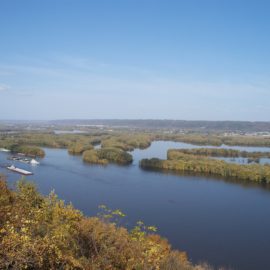
Earlier a post noted a newly discovered whale that washed up on a Florida beach and died because of plastic. The Rice’s Whale has been “discovered” as a separate species of whale that lives in the Gulf of Mexico. Efforts are being made to protect the few number of whales known.
Environmental groups are calling for reduced ship speeds in the prime habitat of a newly discovered, critically endangered whale species that lives only in the Gulf of Mexico. Slowing vessels to just 10 knots in an area of about 18,000 square miles between Louisiana and Florida will improve the little-understood Rice’s whale’s exceedingly slim chances for survival, the National Resources Defense Council, Healthy Gulf and four other groups said in a petition filed Wednesday with the federal ocean regulators. The Rice’s whale had been thought to be a Gulf-dwelling Bryde’s whale, a species also teetering on extinction. But in January, National Oceanic and Atmospheric Administration scientists confirmed its status as a distinct species. Its population is estimated at just a few dozen, making it one of the rarest whale species in the world.
nola.com

The Rice’s Whale can grow to 50 feet in length and weigh 30 tons. It is a member of the “great whales” which includes the Humpback Whale and Blue Whale. THey are rarely seen and tow of the sightings have involved whale what were hit by a vessel. One was severely injured and the other killed.
Rice’s whales are rarely seen, but at least two over the past decade have shown evidence of injuries from ship strikes. One was a lactating female that was struck by a freighter and carried into Tampa Bay with the body draped on the ship’s bow. The other, spotted in the northern Gulf in 2019, had a severely damaged spine consistent with a ship collision, according to the petition. For every Rice’s whale found to have been harmed by a ship, the odds are that at least one more suffered a similar but undocumented fate, said Michael Jasny, a marine mammal protection expert with the defense council. “And when we’re talking about a species with only about 50 animals left, that’s an existential threat,” he said. A year-round mandatory 10-knot speed limit “would have immediate, tangible benefits for the species by reducing the risk of vessel collisions – one of the major impediments to the species’ recovery,” says the petition, filed with the federal oceanic agency. Reduced speeds would also ease the impact of undersea noise on the whales. Industrial noise from shipping and oil exploration can interfere with whale communication and breeding.
The speed limit has been used before in the North Atlantic to protect North Atlantic right whales. The limit was placed on all vessels 65 feet in length and longer. 85% of the vessels were found to be traveling at 10 knots or slower. Volunteer limits did not reach this compliance level.
If the federal agency supports speed zones for right whales, surely they ought to back similar protections for a whale with an eighth of the right’s population, Jasny said. “What they’re doing for the right whale, we should also do for the Gulf of Mexico whale,” he said. The federal agency refers to the species as the Rice’s whale, named after biologist Dale Rice. Many other scientists and the groups petitioning for the speed reduction refer to it as the “Gulf of Mexico whale” because it lives exclusively in that body of water.

The Gulf also hosts a lot of ships, and a large share of their traffic passes through the proposed speed zone. Shipping industry representatives for the Gulf region would not comment on the proposal because they hadn’t yet reviewed it, but similar restrictions have been opposed by cargo ship companies on the East and West coasts. Slowing in wildlife protection areas can cause costly delays and scheduling complications, industry groups have said. Recent research indicates 10-knot limits might not be enough to save the whales. Scientists in Canada found that ships complying with the limits still have an 80% chance of killing a whale if one is struck. The petition also asks the federal agency to require that ships stay more than 1,600 feet from Rice’s whales and to forbid nighttime vessel traffic within the speed zone. Rice’s whales tend to sleep at night near or at the water’s surface where they can be struck, undetected, by ships. Christian Wagley, an organizer with Healthy Gulf, said support for protecting the whale has grown since it was declared a Gulf-specific species. “The tremendous amount of interest in the whale already says that the public wants to protect this magnificent animal and the Gulf ecosystem that supports it,” he said. “If we can save the species, that brings hope that we can ultimately save the Gulf.” The effect on the shipping industry is worthwhile if it helps save the whale, Jasny said. “This is a remarkable species that’s unique to the Gulf and the U.S., [and] we really should do what we can to protect their core habitat,” he said.
The Gulf is heavily traveled but the efforts to save this whale seem reasonable. We will see in the future what develops.



